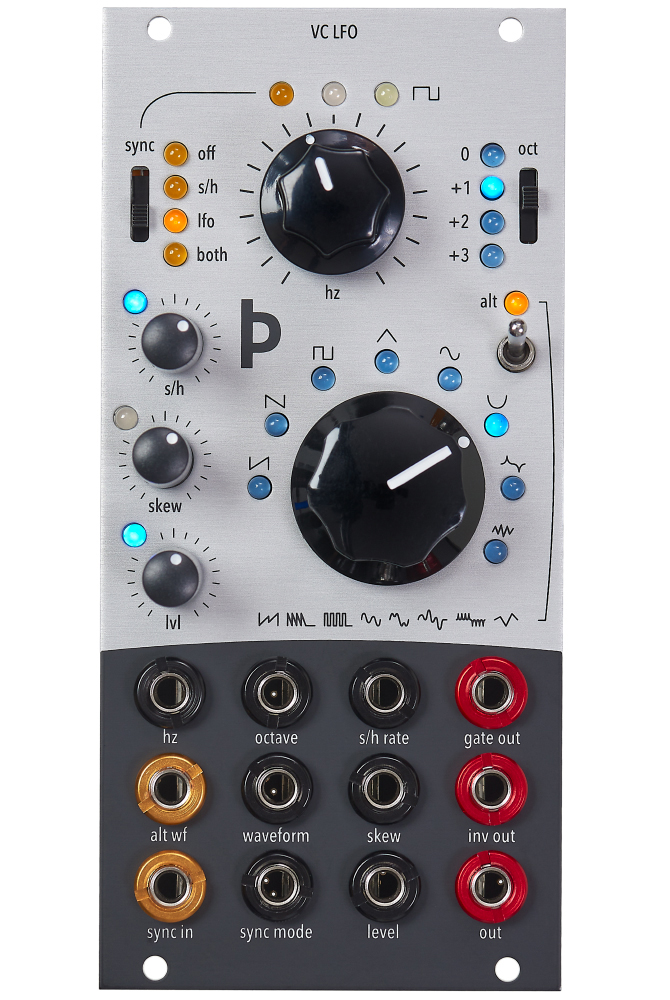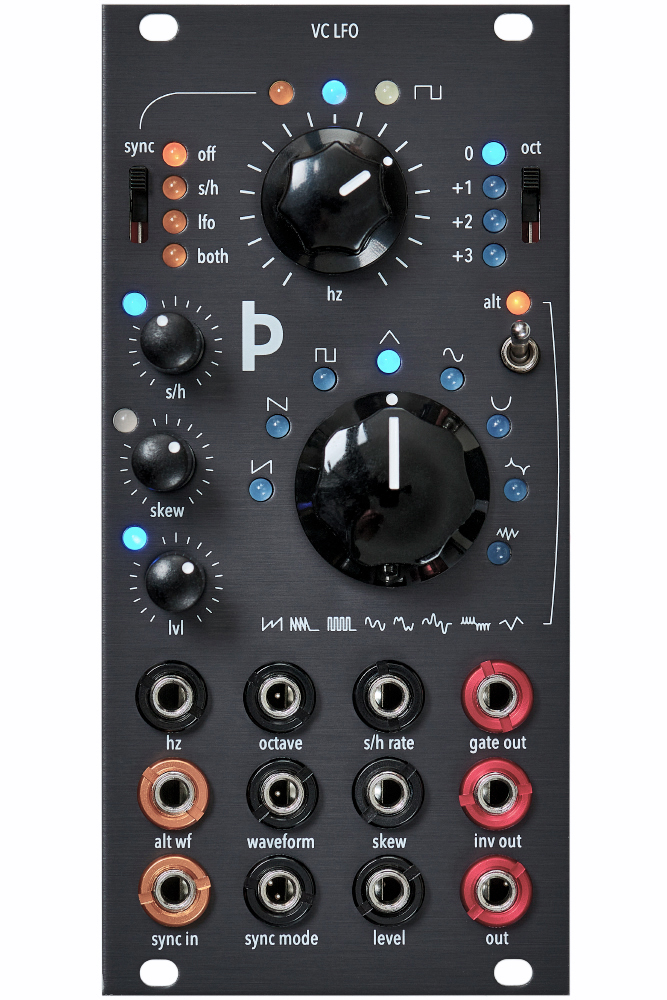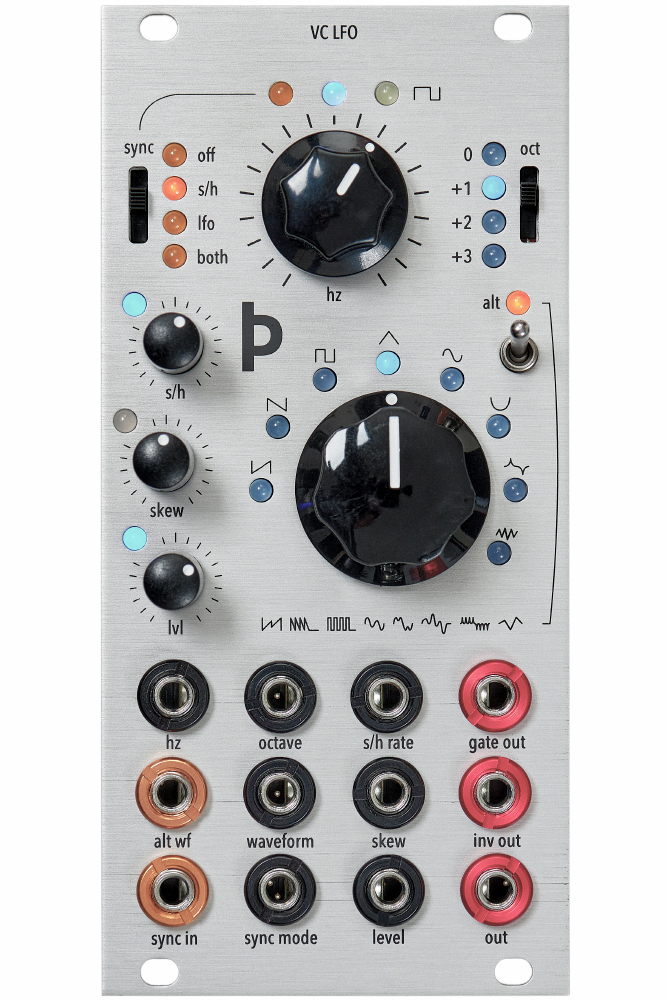User interface
Controls:
Lights up while sync input(20) is high. Sync effect depends on sync mode switch setting(4).
Blue when output(23) voltage is below -2v, red when above +2v. Doubles as frequency/waveform indicator. Affected by level(9) setting so it will be unresponsive below a certain output level. In this case one can refer to the Gate output LED(3) for indication on the state of the current cycle.
Lights up white while output(23) voltage is positive and gate output(15) is +5v.
- Off: sync input(20) is ignored.
- S/H: sync sample and hold rate(7) to incoming sync pulses(20).
- LFO: reset selected waveform(10) on incoming sync pulses(20).
- Both: resets waveform(10) and triggers sample and hold(7) on sync pulse(20).
adjust frequency(2) within selected range(6). Left is slower, right is faster.
- 0: 0.05Hz to 12.8Hz
- +1: 0.1Hz to 25.6Hz
- +2: 0.2Hz to 51.2Hz
- +3: 0.4Hz to 102.4Hz
Controls how often the current state of the waveform(10) is sampled. All the way turned to the left(CCW) is off, then rate increases by clockwise rotation. Turning it on affects all the outputs(15, 19, 23). This rate can be controlled by the sync input(20) when the sync mode switch(4) is in the S/H or BOTH setting. To simply control it from an external clock connected to the sync input(20), set it to a slower rate than the incoming trigger rate.
allows you to shift the center point of the selected waveform(10) left or right from 12.5% up to 87.5% of the cycle duration. The noise waveform is not affected by this setting, but the random waveform(the alternative mode(11) of the noise waveform) is.
sets output(19, 23) level from 0v to +-5v, affected by the level cv input(22). Note that output LED(2) goes dark below a certain output level.
controls which waveform is output(15, 19, 23) by the module, affected by the alt toggle switch(11), note the small legend illustrating the alternative set below the knob.
toggles between the original set of waveforms(10) and their alternative counterparts. The alternative set consists of a mixture of pulsed modes and more complex variants of the original set. Refer to the legend printed below the large knob(10) for an idea of the alternative waveforms.

Inputs and outputs:
Receives -5v to +5v CV which is summed with frequency knob(5) setting.
Receives -5v to +5v CV which is summed with octave switch(6) setting. This changes the range of the frequency knob(5).
Receives -5v to +5v CV which is summed with S/H knob(7) setting.
Outputs a 0v to +5v square wave which goes high when LFO output is above 0v. Useful for clipping LFO output using a VCA for instance. Indicated by the gate output LED(3).
Receives a 0v to +5v square wave input to toggle between the two waveform(10) sets, bypasses the alt toggle switch(11).
Receives -5v to +5v CV which is summed with waveform selection rotary switch(10) setting.
Receives -5v to +5v CV which is summed with skew knob(8) setting.
Outputs -5v to +5v CV inverted with respect to normal output(2, 23). Meaning this output is the mirror image of the normal output.
Receives a 0v to +5v square wave input which triggers a reset on the rising edge. Type of reset depends on the settings of the sync mode switch(4). The sync indicator LED(1) lights up when this input senses a higher voltage.
Receives -5v to +5v CV which is summed with sync mode switch setting(4).
Receives -5v to +5v CV which is summed with lvl knob(9) setting. This controls the amplitude of the outputs(19, 23).
LFO -5v to +5v CV output, indicated by the output LED(2). Amplitude adjustable by the level knob(9) or by the level CV input(22).


















